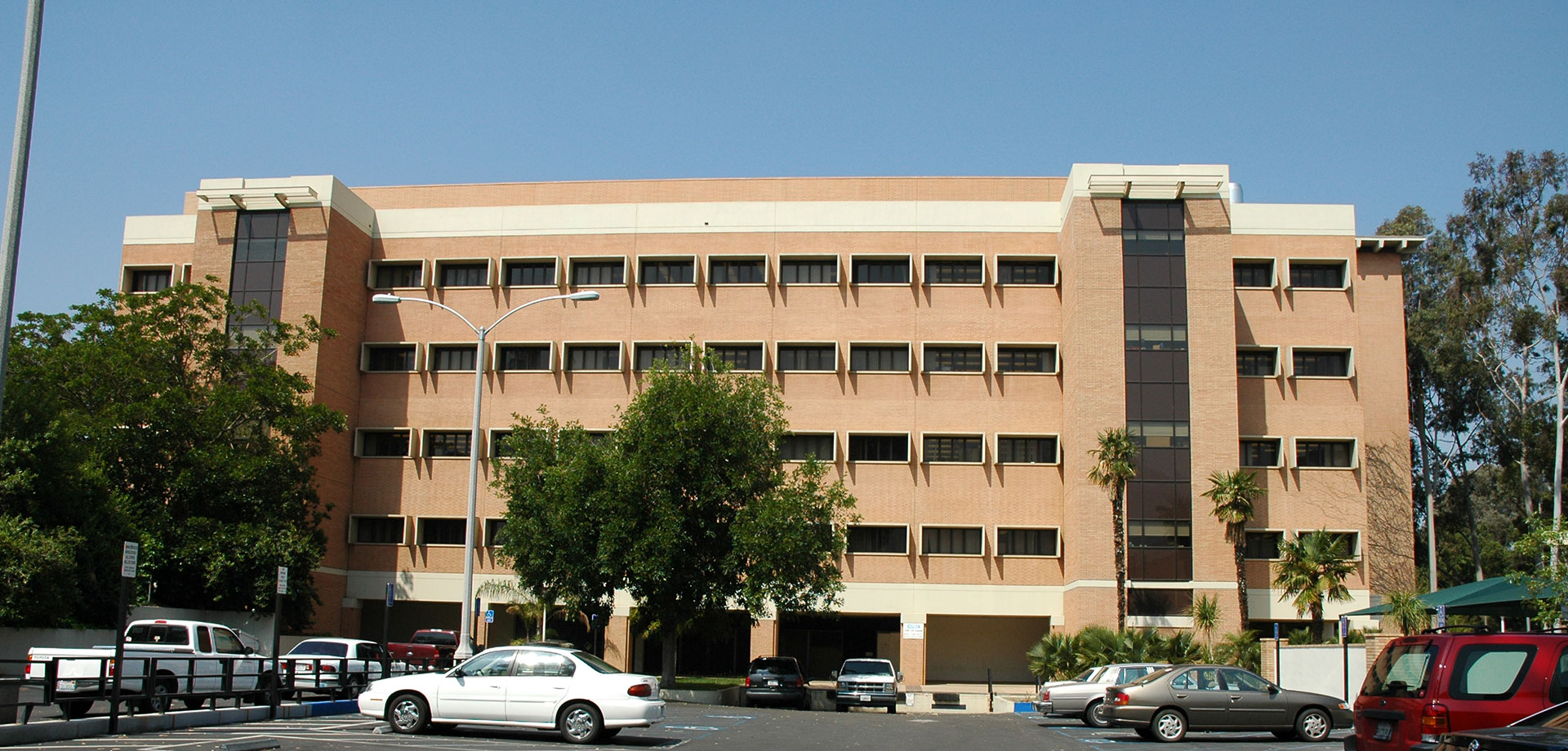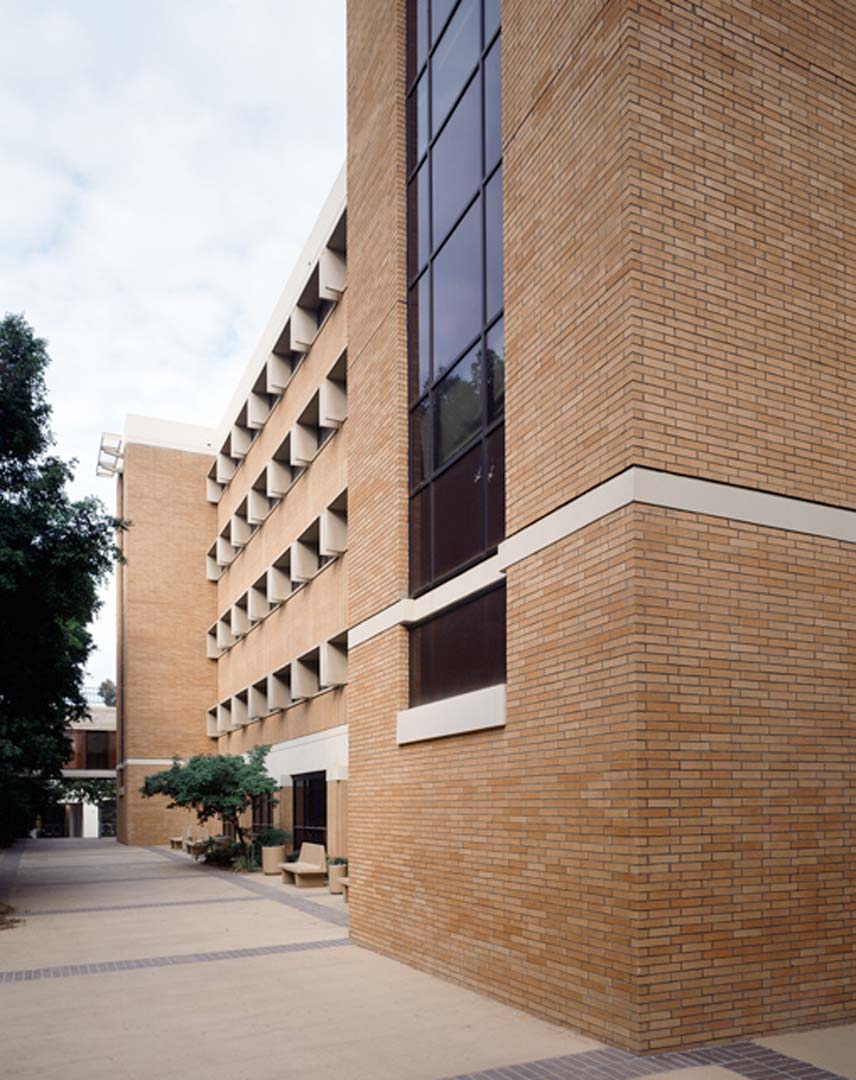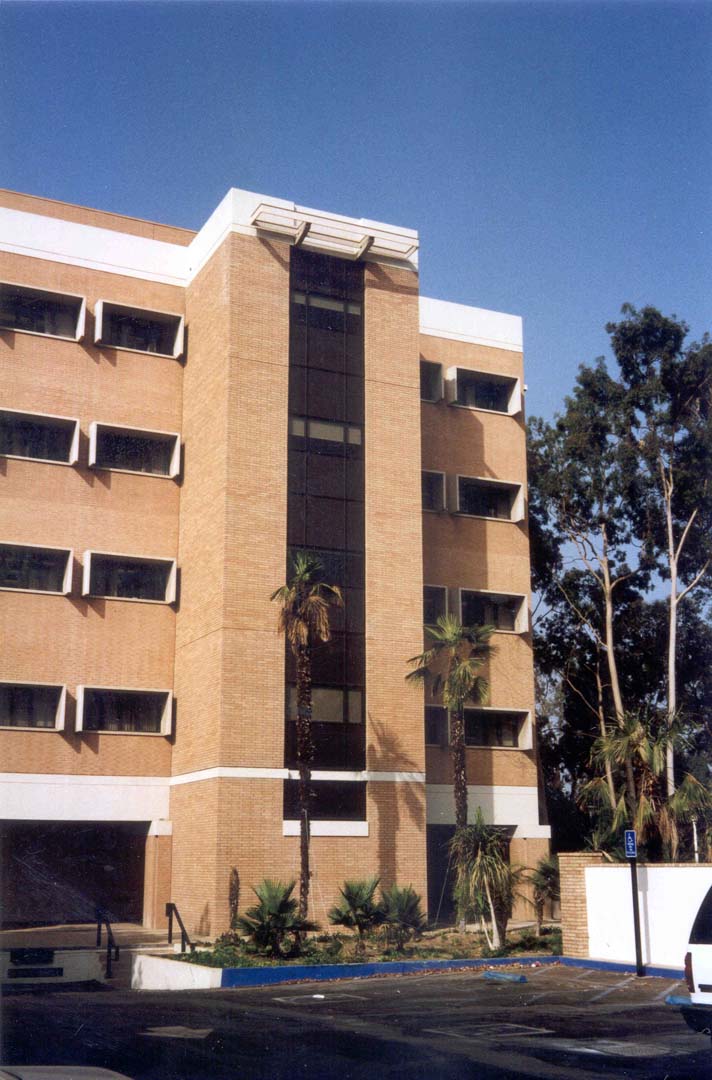Saiful Bouquet has designed a seismic strengthening solution for the University of California at Riverside’s 118,832 gsf, 5-story Boyce Hall Laboratory Building which is home to the departments of Biochemistry, Nematology, Plant Pathology & Microbiology, and Statistics. The project renovates one of two key laboratory buildings as a critical component of a campus multi-phased plan to modernize existing campus science buildings. The project targeted the building’s infrastructure systems and code deficiencies, and modernized instructional and research spaces in support of the campus life sciences programs. The final design included a strengthening scheme that minimized disruption to staff, students, researchers and faculty while continuously occupying the building.
The structural solution incorporates four concrete buttresses at the corners of the building, supported on a drilled pile foundation. Each buttress consists of a four-sided concrete tower connected to the existing concrete flat slabs by steel angle drag struts. The buttresses were designed with windows and knock-out panels for potential future occupancy of the enclosed space. The Boyce Hall building houses laboratories and sensitive equipment that could not be disrupted by excessive noise, dust and vibration. The University desired a non-intrusive approach, and had previously commissioned an engineering study for an exterior solution. SB utilized state-of-the-art structural evaluation techniques to better address the building’s inherent structural capacities, developed a practical exterior buttress scheme, and worked with the architect to create an aesthetically complimentary configuration. The final design, which was well under budget, improved the original scheme. Throughout the project, Saiful Bouquet acted as the prime design consultant, overseeing a broad consultant team including architects, geotechnical engineers, civil engineers, MEP engineers, and construction cost estimators.
“…We are extremely impressed with your firm’s innovative and cutting edge approach in developing unique design solutions. This innovative approach provides the foundation to solve structural design problems that are not only functionally and architecturally responsive, but cost effective as well. This collaborative work with the owner and client to define, plan, and execute complete technology solutions is unprecedented…”
-Daniel C. Johnson, Former Director, Design & Construction, UCR


